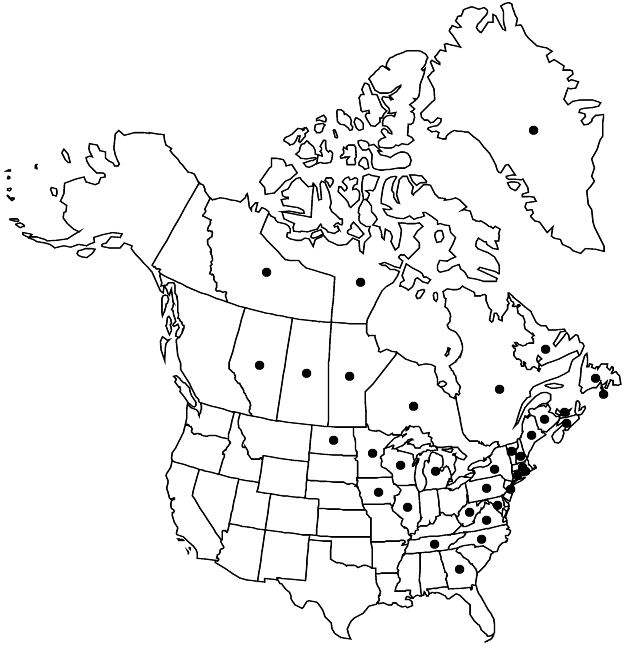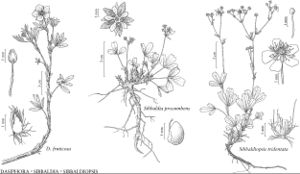Sibbaldiopsis tridentata
Monogr. N. Amer. Potentilleae, 187. 1898.
Leaves: stipules 3–6 mm, margins villous-ciliate; petiole slender, (0.2–) 0.5–6 (–8) cm; leaflets dark green abaxially, light green adaxially, (0.5–) 1–3 (–4) × 0.4–1.5 (–1.8) cm. Pedicels 2–35 mm, glabrous. Flowers: epicalyx bractlets lanceolate, 1–2 mm; sepals 2–3 mm, hirsute, glandular; petals white, sometimes pink-tinged, (4–) 5–8 [–11] mm; anthers reddish, 0.3–0.6 mm; styles 1–2.5 (–3) mm. Achenes dark-brown. 2n = 14, 28.
Phenology: Flowering summer.
Habitat: Dry rocky to gravelly shores or maritime habitats, rocky outcrops, montane balds and promontories in mixed conifer-hardwood woodlands, dry meadows of montane conifer communities, alpine tundra, often in acidic soil
Elevation: 0–1900 m
Distribution

Greenland, St. Pierre and Miquelon, Alta., Man., N.B., Nfld. and Labr., N.W.T., N.S., Nunavut, Ont., P.E.I., Que., Sask., Conn., Ga., Ill., Iowa, Maine, Md., Mass., Mich., Minn., N.H., N.J., N.Y., N.C., N.Dak., Pa., R.I., Tenn., Vt., Va., W.Va., Wis.
Discussion
Sibbaldiopsis tridentata is uncommon to rare through most of its southern range from Connecticut south to Georgia and west to Iowa, Tennessee, and North Dakota. It is more common in Canada and around the Great Lakes. The inclusion of Scotland in the distribution of the species by P. A. Rydberg (1898) is erroneous (T. Wolf 1908).
of conservation concern
Selected References
None.
Lower Taxa
"thin" is not a number.
